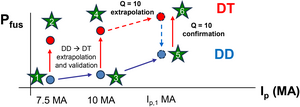ITER publishes research plan R&D needs
Open R&D issues related to the new ITER Baseline 2024 are described together with experimental, modelling and validation activities required to address them.
In describing the R&D program of the ITER device, the new baseline ITER Research Plan also identifies the top issues requiring consolidation or refinement. The R&D required to address these issues have been examined in collaboration with the groups of experts from International Tokamak Physics Activity and the ITER Research Plan development team. In the interest of making these R&D support needs more widely accessible to the fusion research community, scientists at the ITER Organization have just released a consolidated updated list as an ITER Technical Report.
The report, published on 30 May 2025, provides the description of a selected set of issues related to completion of systems' designs, specific choices and options to be explored in the ITER Research Plan, and strategic assumptions on the development of the Plan's experimental program towards high-Q operation.
The support from ITER Member fusion research institutes provides an essential contribution to the further refinement of the ITER Research Plan. Making these R&D needs publicly available is intended to strengthen this support.
Visit the ITER Technical Reports page of the ITER website or download the 32-page document directly here.


